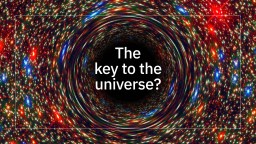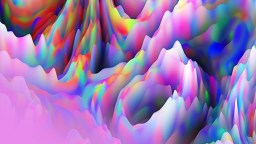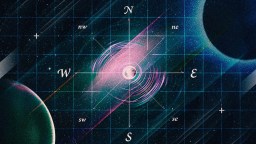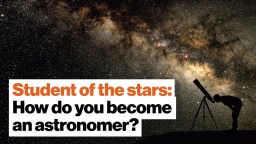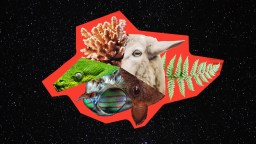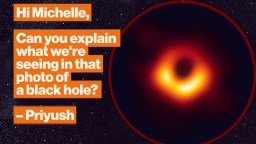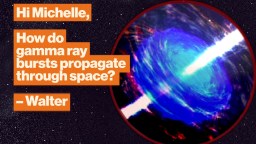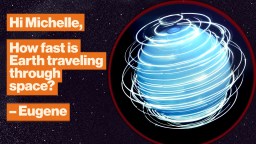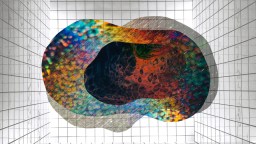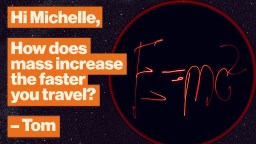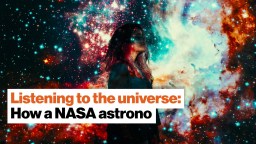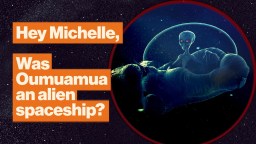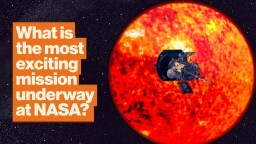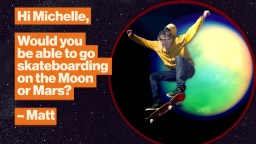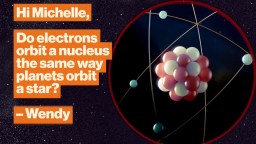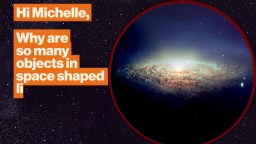Michelle Thaller
Assistant Director for Science Communication, NASA
Michelle Thaller is an astronomer and Assistant Director for Science Communication at NASA's Goddard Space Flight Center.

Is information intrinsic in our universe? NASA’s Michelle Thaller explains.
▸
8 min
—
with
NASA’s Michelle Thaller explains what happens when the densest stars in the galaxy collide.
▸
5 min
—
with
Astronomer Michelle Thaller explains the healing power of physics after losing her husband.
▸
7 min
—
with
Thanks to time-traveling telescopes, we can see more about the Big Bang.
▸
with
Thanks to time-traveling telescopes, we can see more about the Big Bang
▸
with
Google maps won’t guide you to Mars – but will your compass work in space?
▸
with
Astrophysicist Michelle Thaller explains how a solar storm could wipe out civilization… and what we can do to prevent catastrophe.
▸
5 min
—
with
Astronomer Michelle Thaller schools us on what atoms really look, the Big Bang theory, and the speed of light.
▸
9 min
—
with
Astrophysicist Michelle Thaller talks ISS and why NICER is so important.
▸
5 min
—
with
Do space and time really exist? NASA astronomer Michelle Thaller looks at the implications of Einstein’s famous equation E=mc2.
▸
11 min
—
with
Being stuck at home is not as intense as being away from Earth, but there are ways to cope in either scenario.
▸
5 min
—
with
We have arrived: Big Think’s most popular video of 2019 tells us light exists outside of time.
▸
4 min
—
with
Next on Big Think’s 2019 top 10 countdown, black holes may give us a glimpse of the underlying nature of reality.
▸
8 min
—
with
NASA astronomer Michelle Thaller explains what astronomers actually do, and how can you become one.
▸
9 min
—
with
We still don’t have proof of intelligent life beyond that on Earth.
▸
10 min
—
with
Stargazing is a form of time travel.
▸
6 min
—
with
Stargazing is a form of time travel.
▸
6 min
—
with
Going back to the moon will give us fresh insights about the creation of our solar system.
▸
6 min
—
with
The recent photo of a black hole is something extraordinary. Here’s why.
▸
6 min
—
with
Gigantic explosions of light are reverberating across the universe.
▸
7 min
—
with
The periodic table was a lot simpler at the beginning of the universe.
▸
6 min
—
with
We are hurtling through space. But where are we going?
▸
7 min
—
with
Black holes may give us a glimpse of the underlying nature of reality.
▸
7 min
—
with
Light exists outside of time.
▸
4 min
—
with
There are places in our solar system where you can fly.
▸
2 min
—
with
Artistic depictions of the atom have deceived us all.
▸
3 min
—
with
It’s one of the most consistent patterns in the unviverse. What causes it?
▸
4 min
—
with
